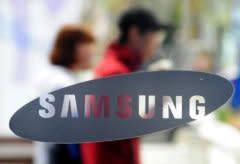Samsung poised for ‘paradigm shift’ into printing

Conquering the world of smartphones and televisions would usually be enough for any one company, but Samsung Electronics has grander ambitions. The South Korean giant is readying a new, full-throttle foray into the exciting and sexy world of ... printers?
After announcing record quarterly profit on Friday morning of 9.5 trillion won (US$8.3 billion), a 47-per-cent jump from a year earlier, the move toward printers is unusual, to be sure, given the general sentiment about the business – that it’s dying.
Yet Samsung is aiming for $400 billion in annual revenue by 2020, or more than double its 2012 total of $187 billion. With market observers starting to doubt that the company can continue its momentum in phones, a key part of that projected growth will be expanding into previously untapped markets. That includes printers, or rather, "printing," as executives are keen to point out. There's a big difference.
"We're poised to lead a paradigm shift," says Hyusang Ha, vice-president of product strategy for printing solutions. "We feel the world of printing is changing."
Is printing dead?
Printing is indeed changing. On the consumer side it’s safe to say it’s drying up. Paper consumption has dropped off a cliff everywhere in the world, with the exception of China, since around 2007, which is – not coincidently – when the mobile revolution began in earnest. Since the arrival of the iPhone, consumers have finally been moving to the paperless existence promised by technology for so long. In North America alone, consumption has dropped by about 30 per cent over the past five years.
It’s easy to understand why. With smartphone and tablet apps dominating, people are finding fewer reasons to print out things like travel directions and boarding passes, especially with the exorbitant price of printer ink.
Samsung has fared decently in the consumer segment, claiming up to a quarter of the market, depending on the country. The company has about 5 per cent of the total global market, according to tracking firm IDC, after HP, Canon and Epson – three printing giants.
The problem, Ha says, is that the consumer segment accounts for just over a tenth of the total $200 billion market and, as the paper consumption numbers indicate, it’s flattening out. The enterprise side, on the other hand, is not only a much bigger market, it’s also growing at a healthy 7 per cent per year. That’s where Samsung wants to be.
The enterprise “printing” business is different than the consumer “printer” business because it’s about more than just hardware, Ha says. While consumers simply buy a printer and then refill it with ink every now and then, businesses require ongoing support, cloud hosting, set-up and maintenance, as well as continual supplies, all of which amount to regular revenue for the service provider.
NFC to be key
Pushing into the segment won’t be easy, since it’s currently ruled by established powerhouses such as Xerox and Ricoh. If Samsung has an edge, it may actually be its consumer electronics prowess.
The company is drawing on its mobile expertise by building near-field communications technology into the printers, the first of which will be available in North America in late July. The sensors will allow for a “tap to print” function, where the user will simply touch their phone or tablet to the printer in order to start a job, similar to how Galaxy S devices currently share photos.
Chin Yoon, vice-president of the commercial business group, says NFC is a technology that will soon be everywhere because it allows for quick, efficient and secure transmission of data. Putting it in printers will accelerate its uptake. “We expect that you cannot avoid it," he says.
Samsung also expects NFC will somewhat counter the trend toward paperlessness. Yoon points out that printing isn’t on the decline solely because people don’t want to do it, it’s just that they’re using mobile devices more and, so far, it hasn’t been very easy to print from them.
Ultimately, the company’s move into printing looks like someone driving a car in the wrong direction on a one-way street. While established giants such as HP and Epson are trying to lower their exposure to what conventional wisdom deems is a business in decline, Samsung is convinced there’s still gold in the printed page.
The problem that rivals are having, in Samsung’s view, is that they’re focusing on the wrong markets. Xerox and Ricoh are concentrating almost exclusively on Fortune 1000 companies, where there isn’t much growth, while HP and Canon are too tied to the shrinking consumer market. Small and medium-sized businesses is where Samsung sees the real opportunity. There is perhaps money to be made in those cracks, and as the established players look for opportunities elsewhere.
Staying the course with consumer printers, however, isn’t an option for anyone, Yoon says.
"We can only survive as a division if we're successful in B2B.”

 Yahoo Finance
Yahoo Finance 